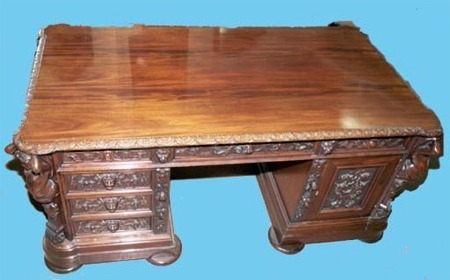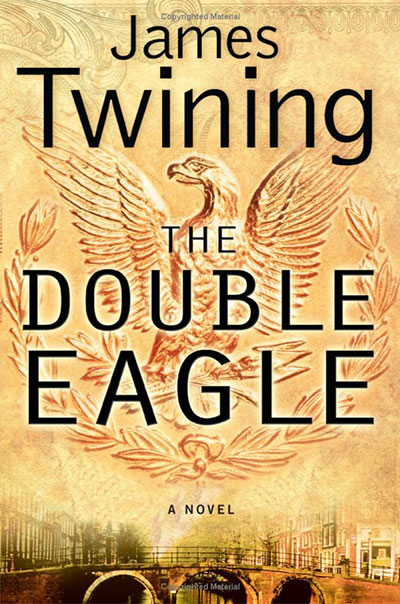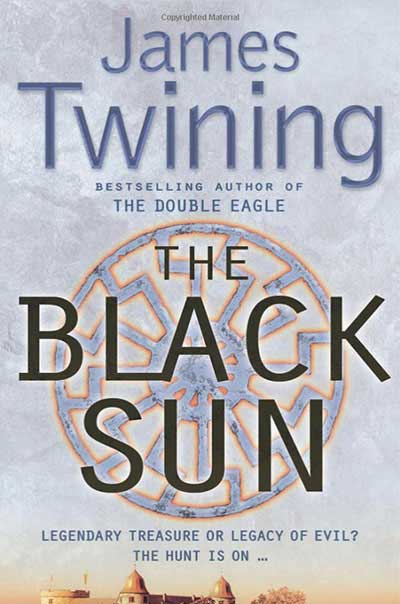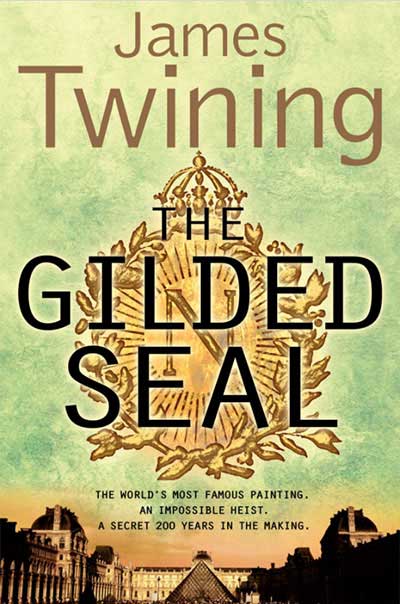Below you will find pictures and information on some of the beautiful works of art that are mentioned in The Black Sun.
Tarquin and Lucretia by Peter Paul Rubens – 1609-1612
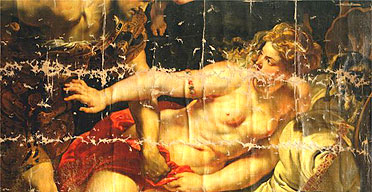
Tarquin and Lucretia was painted by Flemish master Peter Paul Rubens between 1609 and 1612 and is widely viewed as one of his finest early works. The huge painting (only a segment of the 1.87 x 2.14 metre canvas is shown above) depicts the mythological rape of the virtuous matron Lucretia by Tarquin, the son of Rome’s Etruscan king – according to Roman custom, her resulting suicide in the face of family disgrace led to the establishment of the Republic after Lucretia’s kinsmen avenged her honor by driving the king from Rome. Titian, Tiepolo and Crespi all produced works based around this same subject.
The painting was one of Frederick the Great’s favourite paintings and he hung it in the gallery of Sanssouci, his palace outside Potsdam. It remained there until 1942, when the Nazis moved it to a castle in Rheinsberg from where Joseph Goebbels, the Reich Propoganda Minister, sequestered it. He then installed it at his private estate in Bogensee in a bedroom used by one of his many lovers.
At the end of the war the painting vanished and was widely thought to have been destroyed. However in 2003 a consortium of businessmen with alleged links to the Russian mafia, emailed a picture of the painting to an art dealer in an attempt to sell it. The painting was later authenticated at a secret location and although badly damaged, was found to be genuine.
It now appears that when the Soviet 61st army captured Goebbels’ house on April 25 1945, a Russian officer discovered the picture and smuggled it back to Moscow. Decades later the officer’s daughter sold it for only $800 to an antiques dealer who then sold it onto a man who later identified himself as Vladimir Logvinenko.
The painting has now found itself at the centre of the delicate negotiations between the German and Russian governments for the restitution of some 200,000 artefacts stolen from Germany by the Red Army, while Russia has claims on icons and other artworks stolen by German troops earlier in the war.
Despite promises by the Russian government to seize the work, it remains at large. Even in its present state, the painting has an estimated value of $100 million.
In The Black Sun, Tarquin and Lucretia appears in one of the Hermitage Museum’s ‘spetskhran’, or special storage areas.
Portrait of a Young Man by Raphael – 1515

Raphael’s Portrait of a Young Man, is generally regarded as the most important painting lost during the war.
Confiscated along with a Rembrandt and Lady with an Ermine by Leonardo da Vinci from the Czartoryski Collection in Cracow, the three paintings were used to decorate the residence of Hans Frank, whom Hitler had installed as the Nazi Governor of German-occupied Poland.
As the Red Army drew near, Frank decided to move the three paintings to his villa in Bavaria where American soldiers eventually found the Rembrandt and the Leonardo. These were returned to the Czartoryski Collection. However, there was no trace of the Raphael.
In The Black Sun, Portrait of a Young Man appears in one of the Hermitage Museum’s ‘spetskhran’, or special storage areas.
Flowers in an Earthenware Jug by Vincent van Gogh – ??
I have not been able to discover much about this work, apart from the fact that it is believed to have been stolen from a chateau in the Dordogne by the Nazis is 1944, and has not been seen since.
In The Black Sun, Flowers in an Earthenware Jug appears in one of the Hermitage Museum’s ‘spetskhran’, or special storage areas.
Further information on Nazi art theft activity
The Nazis oversaw what was probably the most sophisticated, well-planned and thoroughly executed art theft in history, stealing over 600,000 items between 1933 and 1945, a fifth of the world’s western art.
It was a theft that first manifested itself with the ad hoc appropriation of Jewish property and the destruction of so-called “degenerate art” in favour of art that reflected pure “Germanic” culture – Hitler (a failed artist) clearly recognised the cultural significance of art and its power to unify people under a common ideological banner. This was exemplified by his own private museum in Linz which within only a few years had grown to house over 8,000 “pure” items .
Over time, however, the Nazi art theft programme evolved to the point of military efficiency, with museums and private collections targetted at the same time as the Nazis were drawing up invasion plans for an individual country. These confiscation operations were methodically planned and carried out by various Nazi organizations, including the Einsatzstab Reichsleiter Rosenberg (ERR), the Sounderauftrag Linz and the Ahnenerbe organization that focused mostly on acquiring ancient artifacts such as the Holy Grail.
Many of these stolen works have been lost, destroyed or ended up under new ownership in various museums or private collections. Despite various international laws being in place, identifying stolen works, agreeing their ownership and organising their restitution has been a very slow process, with many museums unwilling to give up works that represent some of their most valuable possessions. The greatest single holder of looted Nazi art is thought to be the Russian government, which confiscated them in lieu of reparations during their invasion of Germany.
Priam’s Gold
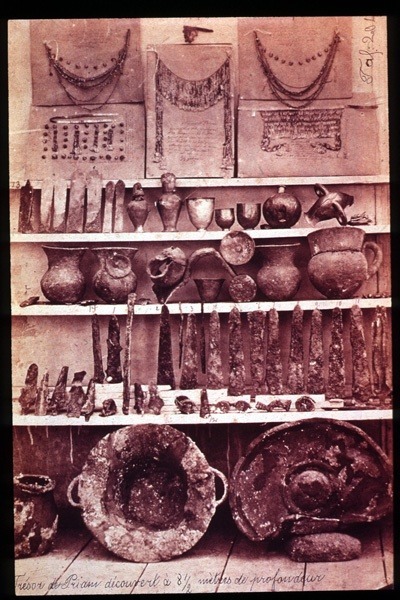
In 1873, while excavating a hill in north-western Anatolia, the German archeologist Heinrich Schliemann discovered a cache of treasure.
Believing the site to be the location of the ancient city of Troy, Schliemann, a natural self-publicist, immediately claimed to have found the long lost treasure of King Priam himself. Historical opinion is now divided as to whether Schliemann really found the hoard or whether he assembled it from several smaller finds, maybe even commissioning a number of items from local goldsmiths to bolster his haul.
Schliemann illegally smuggled the treasure out of Anatolia, later trading some of it to the government of the Ottoman Empire in exchange for permission to dig at Troy again. This is now located in the Archaeological Museum of Istanbul.
The rest was acquired in 1880 by the Imperial Museum of Berlin in whose hands it remained until 1945, when it was stolen by the Red Army from a protective bunker beneath the Berlin Zoo. During the Cold War, the government of the Soviet Union denied any knowledge of the fate of Priam’s Treasure. In 1997, however, the treasure turned up at the Pushkin Museum in Moscow. The Russian authorities have refused to return the treasure, claiming it as compensation for the destruction of Russian cities by Nazi Germany in World War II.
Patek Philippe pocket watch- 1922
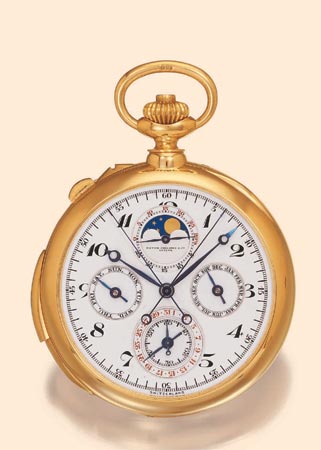
Patek Philippe was founded in Geneva in 1839, by an exiled Polish Nobleman, Count Antoine Norbert de Patek and his compatriot Francois Czapek. Their earliest watches were signed Patek, Czapek & co. until 1845 when Czapek left the partnership. From May 1845 to January 1851 the firm was known as Patek & Co until in 1851 when the French watchmaker Jean Adrien Philippe, who had joined the company in the intervening period, became a full partner.
Appropriately, the two most complicated watches of all time were made by Patek Philippe. The first, made for Henry Graves Jr. New York, was completed at the beginning of the century, and the second, the Caliber 89, the world’s most complicated watch, completed in 1989 (hence the name) to mark the firm’s 150th anniversary.
From the middle of the 19th century, Patek Philippe assumed a leading role in the Swiss watchmaking industry which it still holds to this day. It achieved this status as the “Rolls Royce of watches” by both raising the standards of workmanship and through technical innovations such as the free mainspring and the sweep seconds hand, in addition to developing improvements to regulators, chronographs, and perpetual calendar mechanisms.
The pocket watch featured above was made by Patek, Philippe & Cie., Gení¨ve in 1922 with case number 409792. It was sold to Mr. L. L. Cuttler on October 21, 1929 and is an extremely rare and fine example of an 18K gold keyless, astronomical, minuterepeating pocket watch with perpetual calendar, phases of the moon and split-seconds chronograph. It was sold at auction in 2003 for CHF 212,500.
In The Black Sun, this watch belongs to Tom’s father and later turns up in Harry Renwick’s possession.
French Partner’s Desk – c.1890
The desk featured is an exquisitely carved mahogany partner’s desk, decorated with carvings of fruit, foliage, and various creatures. Acaryatid and atlantes figures flank each corner while carved lion mask handles are featured on each drawer. The front and reverse side are identical, with four drawers on the left and a cabinet on the right, with the whole resting on circular flat feet.
